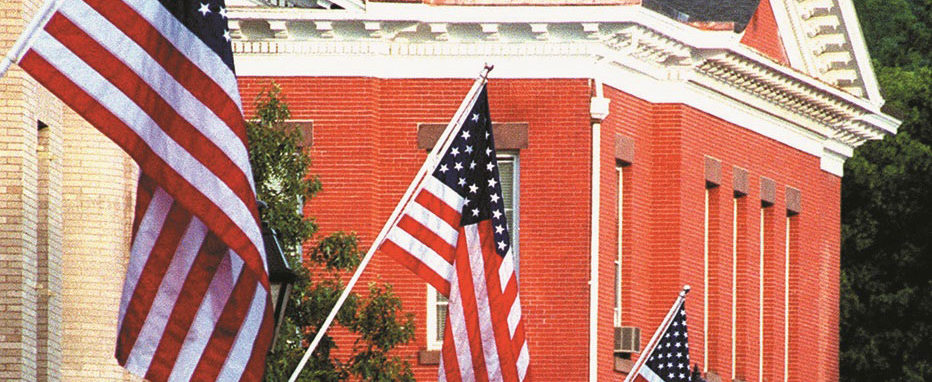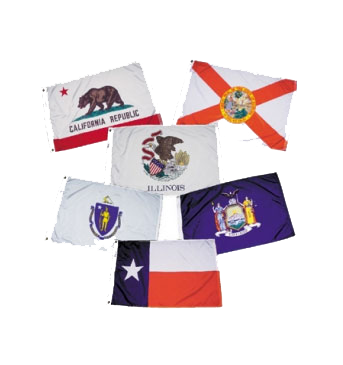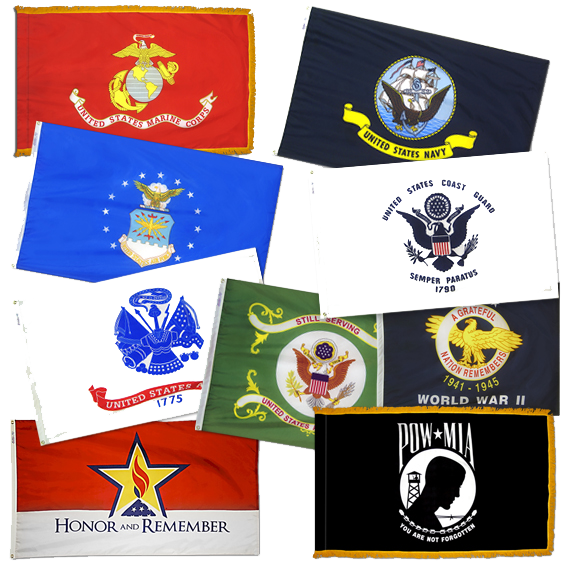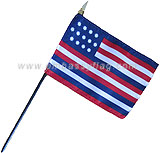PRODUCT DESCRIPTIONS
Historic Serapis outdoor flags are USA made of nylon flag material and are finished with a canvas heading and two brass grommets on the hoist side, 2 rows of stitching top and bottom sides and 4 rows of stitching on the fly side. They are attached to the flagpole by means of a halyard (rope) and flag snaps, or to smaller poles with flag fasteners. Standard stock size for Serapis flags is 3x5 ft.
Serapis desktop flags are made in the United States. Size is 4 x 6 inch, lightweight nylon material, hemmed all four sides, mounted on 10” black staffs with a golden spear point. Table top bases are available in black plastic to display from 1- 7 flags. Wood bases are available with either 10 holes or 12 holes to display additional flags.
FLAG DESCRIPTION / HISTORY
1778 - The Serapis flag is identified by 13 eight-pointed stars arranged in three rows and four blue stripes within the 13 stripes. It did not meet the standards set by Congress in the 1777 Flag Act and so is considered an American ensign, not an official national flag.
The flag was named for the HMS Serapis, which John Paul Jones, captain of the USS Bonhomme Richard captured, 23 Sep 1779, off the coast of the United Kingdom in the Battle of Flamborough Head. At one point in the battle, the Richard's colors were shot down from the mast. "Striking the colors" is a sign of surrender, and Captain Richard Pearson of the Serapis asked Jones if he intended to surrender. Though outgunned, Jones gave his famous reply, "I have not yet begun to fight!" Jones ordered the Richard to be lashed to the Serapis, and the ships' cannons and crews exchanged fire until the Serapis was forced to surrender.
The Bonhomme Richard was heavily damaged and sank. Jones sailed his prize, the battle-damaged Serapis, to the Dutch port of Texel, where the British ambassador accused him of piracy, since he sailed a captured ship without flying a recognized national ensign. An ensign was quickly constructed, based on a year-old description written by Benjamin Franklin, US ambassador to France. Dutch officials secretly added a sketch of the ensign into their records, so that when the books were checked the next day, the ensign flying from the Serapis was officially recognized. John Paul Jones and his crew sailed back to the United States, but ongoing diplomatic issues kept the Serapis in port, under French authority. |













